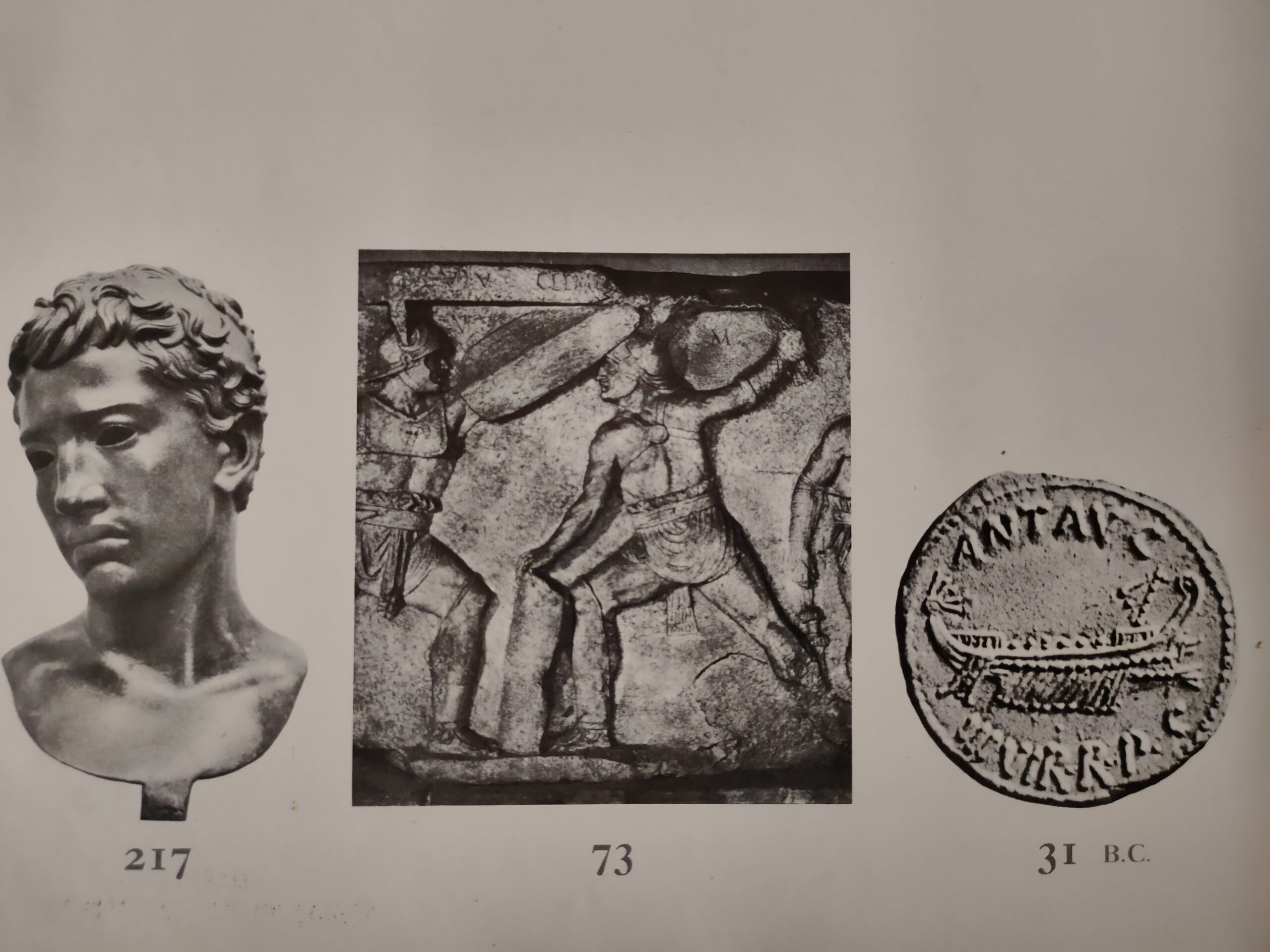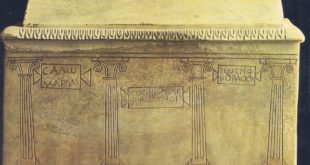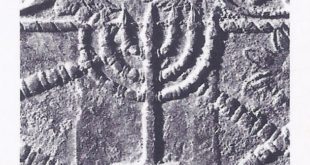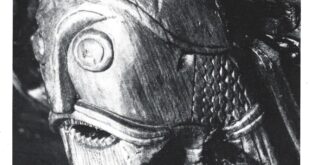Many answers have been given to this question. To most people it is undoubtedly the record of past events, but a moment’s reflection will show that it is not a record of everything that has happened, whether the subject be the history of mankind as a whole, or of a nation, a city, a religion or institution. History, as it is recorded by chroniclers or presented by historians, inevitably involves the selection of certain events as being especially significant among all that happened within a specific area of the past. Selection also implies criteria of interpretation by which events are considered significant. In other words, out of the complex of past happenings certain events are chosen as being “historical.” This process of selection and interpretation is a very complicated one and it has been going on ever since man first began to record his past — about the beginning of the third millennium B.C.
Selecting an “historical” event also involves a process of abstraction and concretion that is fundamentally artificial, yet instinctive to man and a basic factor of his rationality. It presupposes that the passage of time is made up of a series of “events,” each distinct and identifiable, but, on analysis, this presupposition is very difficult to justify. What we call “Time” is essentially mysterious; it is one of the main categories of our consciousness and we cannot get outside it and assess it objectively. Time presents itself to us primarily in the ever-changing pattern of our experience; if we were not conscious of such change, it is difficult to see how we should be aware of Time. Although our apprehension of temporal change is continuous when we are conscious, some phenomena affect us more than others and we naturally endow them with especial significance; we abstract from a continuous sequence some specific section and isolate it as a decisive “event.” The section which we thus choose may extend over a period of some years as, for example, the French Revolution is designated a decisive event in French history; but generally our instinct is to select some more sharply defined happenings that we can invest with definite significance as, for example, the storming of the Bastille on July 14, 1789 is said to constitute the beginning of the French Revolution — in other words, as being a “milestone” in French history.
The great German historian Leopold von Ranke (1795-1886) defined the historian’s task as being that of describing the past “as it really happened” (wie es eigentlic gewesen). His definition will doubtless always stand as the ideal of scientifically objective history and as a warning against the writing of history as propaganda or apologia for some nationalist, political or religious end. It has however, come to be realized that this represents an ideal that can never be wholly achieved. As already noted, History inevitably implies selection and interpretation of the facts considered to be relevant. Both activities ultimately depend upon human minds, which are conditioned by many factors such as education, religion and nationality, quite apart from personal interests and consciously conceived aims. Throughout all ancient Hebrew historiography; for instance, runs the basic conviction that Time is a linear process in which the providence of Yahweh, the god of Israel, was being progressively revealed as History on behalf of his Chosen people, the “children of Israel”. By contrast, according to both the Hindu and Buddhist views, the empirical world is not reality but an illusory process of phenomena that moves unceasingly in repetitive cycles, so History can have no ultimate significance.
Nevertheless, even though von Ranke’s ideal of History is beyond practical attainment and all our records of the past contain an irreducible factor of personal evaluation, the conviction remains deep-rooted that History is important and worthy of study. It is so regarded partly because it attests that man is an effective agent in the working-out of his destiny. For even though the Marxist view of History as the inevitable fulfillment of fundamental economic laws is now widely recognized as logical, a realistic assessment of the evidence warns us against accepting our past and present as merely the result of economic predestination. We have all seen enough during the six decades of the last century to be convinced that imponderable factors, as well as economic ones, operate to prevent the future pattern of History being forecast, as astronomers can forecast the future position of the planets. Thus, although it might have been predicted that a second world war would have resulted from the European situation after World War I, no one could have foreseen the part that Adolf Hitler was to play in the 1920’s, or even in the first years of the 1930’s. Several events of World War II, where History turned on the personal equation, might well have produced vastly different consequences for all concerned: what would have resulted if the Battle of Britain in 1940 had been won by Nazi Germany or the Battle of Stalingrad had gone the other way in 1942-43, or the first atomic bomb had been completed in Germany instead of America? All the events, seen in retrospect, can rightly be called milestones of History.
Any philosophical definition of historical fact or of History itself must surely admit that some happenings in the story of man have been more critical or decisive for his destiny than others. Hence, a sequential study of such milestones of History will provide, as it were, a synoptic chart of the past of our race, rather as anatomical Charts show the synapses or nerve centres of the human body. By linking each milestone with essays to show the connection of each historical synapse with those before and after, an account of human culture and civilization should emerge that is both dramatic and instructive, recording some of the factors that have shaped our situation today.
This category and series of posts deals with a sequence of sixteen milestones, ranging in time from c. 3000 B.C. to AD. 70. Certain limitations in publishing have inevitably precluded many that would have merited inclusion in a greater detail; but reference will be made to these in the linking essays. The selection of the first milestone constituted a problem, because recorded History started about the same time in Egypt and Sumer — indeed, a famous Sumerologist, Professor S. N. Kramer, has written a book entitled History Begins at Sumer, thus advocating the priority of the civilization in which he specializes. A good case can, indeed, be made out for the chronological primacy of Sumer but, whereas the Sumerians had established small city-states in Lower Mesopotamia by the end of the fourth millennium B.C., it was in Egypt that the first national state, with a centralized government, was set up about 3000 B.C. From then on, the cultural achievement of Egypt equaled, if not excelled, that of Sumer. However, the establishment of these first civilized states in the Valley of the Nile and the plain between the Tigris and Euphrates was preceded by millennia of gradual cultural development of the human race. Although no written records exist to inform us of decisive milestones, some of the basic discoveries made during that long, remote period laid the foundations for the later achievements of civilization.
The earliest skeletal remains of homo sapiens revealed by archaeology, together with relics of his culture, date from about thirty thousand years ago. From this evidence it is clear that certain fundamental discoveries had already been made. The use of fire can, indeed, be traced back to 300,000 B.C.; indications of its use were found in the rock shelters at Chou K’ou Tien, which had been inhabited by the so-called “Peking Man”, a remote hominian precursor of homo sapiens. How this ability, never achieved by the other animals, was first acquired by the sub-men who preceded the first ancestors of our race is unknown; but it was basic to man’s conquest of his natural environment. The ability to make tools and weapons has similarly, a long unknown ancestry. Although some animals are accustomed to employ materials for purposes beyond the range of their own physical endowment (e.g., the dam-building of beavers), man alone has had the talent continuously to improve his tools and weapons, giving him increasing mastery over animals stronger and swifter than himself. During the Old Stone Age, man also became an artist, as the painted caves in France, Spain and elsewhere impressively show. This art seems to have been inspired not by aesthetic ideas but by magical beliefs. Indeed, many other Palaeolithic practices show that already man was aware of problems, both natural and supernatural, which he sought to solve by religio-magical means. Thus he felt that the dead needed special tending: he carefully buried them with food, tools and ornaments, suggesting belief in some kind of post-mortem existence. He carved figurines representing women, with the maternal attributes grossly exaggerated and the faces left blank; and at Laussel, in the Dordogne area of France, he has left behind one such figure that, from its position, suggests a cult object, deifying the Mother as the source of fertility and life.
Man in the Old Stone Age was a food-gatherer, who obtained his food chiefly by hunting. During the New Stone Age (c. 8000 B.C.), he became a food-producer. Agriculture began, although how and where remains unknown to us. What has aptly been called the “Neolithic Revolution” laid the foundations of civilization. With the development of agriculture went the domestication of animals and the invention of pottery and weaving. Soon the first agrarian settlements were founded, with stone-built houses and defenses: at Jericho and Catal Huyuk in Anatolia, date back to the seventh millennium B.C. A fertility religion also developed, centered on a mother goddess and the virility of the bull. The complexity of this Neolithic culture presupposes the elaboration of language as a means of communication. How and when language first began is beyond our knowing, but such complex undertakings as cave-art suggest that it must surely have existed in some form in the Palaeolithic era.
Through these long and dim corridors of Time, before human thought and action began to be recorded in writing, there were doubtless many occasions which were truly milestones in the evolution of man. Who sowed the first seedcorn, made the first earthen pot, worked the first metal, sailed the first boat, wrought the first wheel, must remain forever unknown. Yet these acts, involving new concepts and the technical skill to translate them into practical realities, initiated the long technological development which made possible all later achievements of civilized living. Hence we must recognize that, though their exact date is unknown, there were many great milestones in the story of man long before History began.





